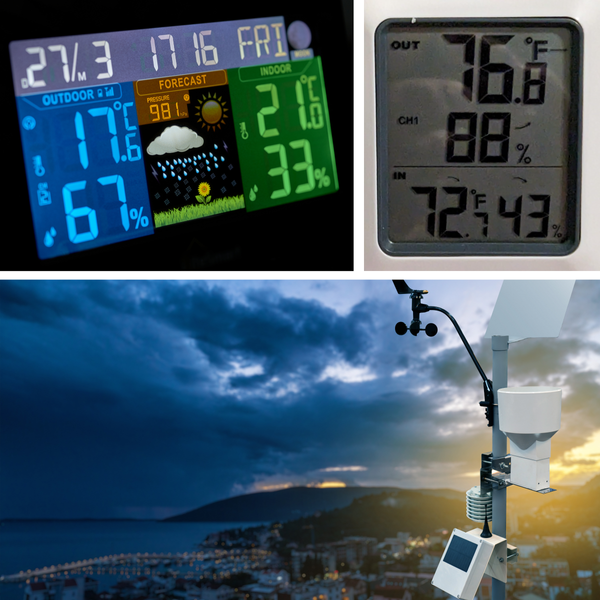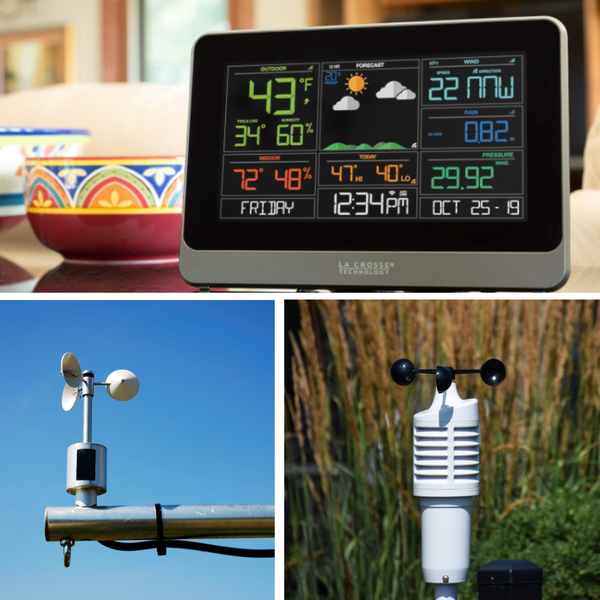Key Takeaways:
- Optimal Height: The ideal mounting height varies for different sensors but generally, anemometers should be at 10 meters and temperature sensors at 1.5 to 2 meters above ground level.
- Location Considerations: Avoid obstructions and reflective surfaces to prevent data distortion.
- Installation Stability: Ensure the mounting pole and installation site offer stability and exposure needed for accurate readings.
Weather enthusiasts and climatologists alike know that the accuracy of weather data collected from a personal weather station hinges significantly on how and where it's mounted. This guide delves into the specifics of mounting your weather station to optimize the quality of data you gather.
Understanding the Importance of Proper Mounting
The precision of weather readings from your personal station can be greatly affected by its height and location. Incorrect mounting can lead to data errors, which in turn could misguided weather predictions and observations. Therefore, setting up your weather station correctly is crucial for reliable measurements.

Best Practices for Mounting Height
Temperature and Humidity Sensors
For temperature and humidity readings, sensors should ideally be placed about 1.5 to 2 meters above the ground. This height prevents heat radiated from the ground from skewing the temperature readings, especially in direct sunlight. It's also low enough to avoid the cooler, breezier conditions that prevail at higher elevations, which might not represent the ambient weather conditions.
Wind Speed and Direction Sensors
Wind readings, which include wind speeds and wind direction, are best taken at a height of about 10 meters from the ground. This elevation is considered optimal as it minimizes the impact of ground interference and nearby obstructions like trees and buildings, providing a clear, unobstructed flow of air.
Choosing the Right Location
Avoiding Obstructions
The immediate vicinity of your weather station should be free from any large obstructions such as buildings or trees. These structures can deflect or funnel the wind, leading to inaccurate wind readings. A general rule is to install the station at a distance of at least four times the height of the nearest obstruction.

Surface Reflections
Mount your weather station away from reflective surfaces like large bodies of water or expansive concrete areas that can amplify sunlight and distort temperature and humidity sensors. Grass, soil, or gravel provide a more neutral ground that reflects ambient conditions more accurately.
Installation Tips
Using a Mounting Pole
A mounting pole is essential for elevating your sensors to the required height. The pole should be sturdy enough to withstand weather conditions and maintain stability to avoid any sensor shaking that could affect the readings. Ensure the pole height aligns with the guidelines for each sensor type.

Securing and Siting
When installing your weather station, ensure it is securely fastened to avoid any movement. The location should be an open field or a clear area in your yard that mimics an open field scenario, free from trees, fences, and buildings that could influence readings.
Adjusting for Environmental Variables
When setting up weather stations, it's crucial to consider the environmental elements that could skew your data. For instance, if a humidity sensor is placed too close to bodies of water or damp areas, such as a garden or a pond, it might show higher humidity levels, not reflective of the broader area. Similarly, the presence of reflective surfaces like large windows or metal structures can impact temperature readings by either absorbing heat during the day or radiating it during the night.
Moreover, the influence of flora cannot be underestimated. Weather stations located near or under trees might measure reduced wind speeds and altered humidity levels due to transpiration. It's a balancing act to find a spot where natural and man-made elements do not distort the readings. An ideal location is often a clear, open space that mirrors the general environment of the area, ensuring that your weather station provides a true snapshot of the weather patterns.
Incorporating Technology for Enhanced Accuracy
In the digital age, leveraging technology to boost the accuracy of your weather station is a smart move. Many modern weather stations come equipped with advanced settings that help minimize errors in data collection. For example, some models offer software that can filter out anomalies in temperature fluctuations caused by sudden changes in sunlight exposure. This is particularly useful for stations that cannot avoid some degree of exposure to the sun.
Additionally, video tutorials can serve as an invaluable resource for the correct installation and maintenance of weather stations. These guides often provide visual and practical examples, showing the ideal placement of sensors like the anemometer to avoid obstructions such as buildings or trees. They also emphasize the importance of north-facing installation to prevent the sun from directly hitting the sensors, ensuring that measurements like wind speed and direction are as accurate as possible.

Calibration and Maintenance
Regular checks and maintenance of your weather station are vital. Calibration ensures that your sensors are providing accurate readings. Check manufacturer guidelines for specific calibration procedures and follow them diligently to maintain the integrity and accuracy of your data.
Impact of Incorrect Mounting
Mounting your weather station too low or too high, or near obstructions, can lead to significant data discrepancies. For instance, a rain gauge placed under a tree might show less rainfall, while a temperature sensor placed on a roof could record higher temperatures due to heat absorption by the roofing material.
Summary
Beyond following the installation guide that should come with your product, here are some other factors to consider. Mounting your personal weather station correctly is crucial for accurate weather data collection. Temperature and humidity sensors should be mounted at about 1.5 to 2 meters, while wind sensors perform best at around 10 meters. Avoid obstructions and reflective surfaces, and ensure the installation site offers the stability and exposure needed for precise readings. Regular maintenance and calibration are also essential to keep your station functioning correctly.
FAQ
Q: Can I mount my weather station on the roof of my house?
A: While mounting on a roof can provide unobstructed wind readings, it can adversely affect temperature and humidity readings due to heat absorption from the roof. It's generally better to find a more neutral location.
Q: How often should I calibrate my weather station?
A: Calibration frequency can vary depending on the model and exposure to extreme weather conditions, but generally, checking sensors once a year is advisable.
Q: What is the best material for a mounting pole?
A: Durable materials like galvanized steel or aluminum are recommended for mounting poles as they offer durability and stability against various weather conditions.










